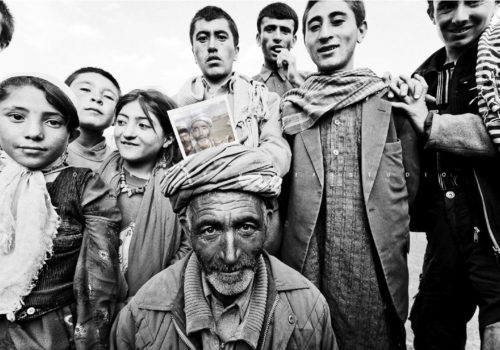Cedric Houin, 33, Aka Varial, and Fabrice Nadjari, 34, met in a Paris elementary school. Inseparable until the age of ten, they fell out of touch when they changed schools. Twenty-three years later, they met again by chance through mutual friends and social networks.
In the meantime, Cedric had lived ten years in Canada, where he became one of the most important artistic directors and photographers of the Montreal arts scene, winning numerous awards (LUX, PDN) for his work combining beauty, surrealism and virtuosity. He also worked for some of Canada’s most prestigious companies, like Google, Ubisoft and S.A.T.
Fabrice is a sociologist and graduate of the Parsons School, where he specialized in photography. Researcher, entrepreneur and lover of images, he has managed a communications agency, taught visual communication and lived and worked in a dozen different countries.
Reunited, Fabrice and Cédric share a passion for long trips, photography and discovering new things and people. They decided last April to travel to Afghanistan to collaborate on a project. The result is the trans-media work Wakhan an Other Afghanistan, from which the series Traces of Time was extracted.
Cédric and Fabrice now form the photography duo Varial et Nadjari, based in New York.
Traces of Time: Afghanistan Polaroid Project
July-August 2011. When we left for the Wakhan corridor in north-eastern Afghanistan equipped with two polaroid cameras and a couple of hundreds PX-70 films for « Impossible Project », our intention towards this medium was quite simple. To leave to these afghans we had been waiting to meet for a long time a tangible and rare gift, remembrance of them and of our encounter. Not to be like the photographers who steal images and promise they’ll send a print once back home, without ever doing so. There came this idea of a series of instantaneous portraits, which we shot in a dozen of villages, walking our way through this remote part of Afghanistan to the chinese border. But we soon realized the portraits we were taking with the polaroid cameras developed oddly and degraded rapidly, because of the altitude and harsh conditions. To keep a trace of this time and pictures, we then asked the villagers, wakhis, kyrgyz or pachtounes to pose freely for us, holding the picture of one of their relatives in their daily environment.
This ever-repeated ritual, sometimes hard for us after endless days of walking, has always been a source of exchanges and curiosity, joy and laughters, providing us with strong and intimate moments with the people of the corridor. Unblinking in front of technical failures or trying to understand our mysterious intentions as image-makers, our afghan hosts unanimously gave us patience and good will, while lending themselves to the portrait ceremony. It led us to the most amazing encounters in this part of the country where foreigners almost never venture. For some of the villagers it was the first time they would actually see their printed image. Some had never even seen an outsider.
The Traces of Time project presents a vision between a current and tangible printed reality that already ceases to exist and an uncertain present resembling the past. This is the perspective of travellers who steal a snapshot of life and leave behind them a trace that could change the lives of those they’ve passed.
Varial & Nadjari
















